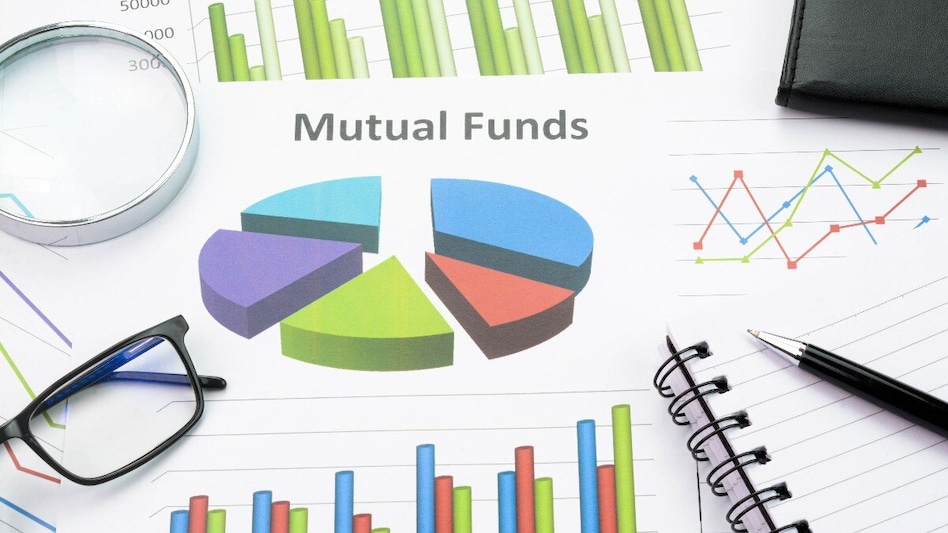 Investing in large-cap funds not only adds stability to your portfolio, but also guides your investment journey with assurance rather than fear.
Investing in large-cap funds not only adds stability to your portfolio, but also guides your investment journey with assurance rather than fear. Investing in large-cap funds not only adds stability to your portfolio, but also guides your investment journey with assurance rather than fear.
Investing in large-cap funds not only adds stability to your portfolio, but also guides your investment journey with assurance rather than fear.The Association of Mutual Funds in India (AMFI) reported a dramatic decrease in net investments in Sectoral/Thematic Funds for March, displaying a 97% drop. The inflows fell sharply to Rs 170.09 crore from a substantial Rs 5,711.58 crore in February. This significant downturn follows a robust year in 2024, when sectoral and thematic funds collectively gathered Rs 1,09,711 crore. Despite this, all sectoral and thematic funds have delivered negative returns this year, with thematic funds particularly affected by market fluctuations in recent months.
Over the past five years, sectoral mutual funds, especially those focusing on infrastructure and commodities, have demonstrated considerable resilience. According to AMFI, these funds have benefited from focused policy reforms, increased capital expenditure, and a commodity supercycle. Sectoral–Infrastructure funds achieved the highest average returns at 32.53%, followed by Thematic–PSU funds with 31.65%. Infrastructure funds have dominated this category, with 23 schemes consistently posting robust returns, highlighting their strength in the mutual fund industry.
Performance data indicates that infrastructure funds have delivered returns ranging from over 13% to 26% over the last three years. Extending the assessment to five years, the returns are more impressive, ranging between 25% and 41%.
Notably, the Quant Infrastructure Fund achieved a 5-year return of 41.09%, marking the highest in its category, though it moderated to 14.98% over the past three years. Meanwhile, the ICICI Prudential Commodities Fund recorded a 5-year return of 39.06%, despite a lower 3-year return of 11.65%.
Other infrastructure-focused funds have also shown robust performance: the ICICI Prudential Infrastructure Fund posted returns of 38.25% over five years and 25.58% over three years; the Bandhan Infrastructure Fund returned 37.04% and 23.03% over the respective periods; and the HDFC Infrastructure Fund achieved 36% and 26.39%. These results underscore the potential for sectoral funds to outperform during upcycles, though they remain subject to volatility and concentration risks. Investors considering these funds should be aware of the need for tactical timing and a comprehensive understanding of market dynamics.
Comparing sectoral funds vs flexi funds
Sectoral/Thematic Funds: These funds have delivered impressive 5-year returns, particularly those focused on infrastructure and commodities. However, their 3-year returns show more variability, reflecting the cyclical nature of specific sectors.
Flexi-Cap Funds: While their 5-year returns are slightly lower than the top sectoral funds, flexi-cap funds offer more consistent performance over the 3-year period, indicating a balanced approach to market fluctuations.
Investor Takeaway
Sectoral funds can be suitable for investors with a higher risk appetite looking to capitalize on specific industry trends.
Flexi-cap funds are ideal for those seeking diversified exposure with relatively stable returns across market cycles.
| Fund Name | Category | 5-Year Return (%) | 3-Year Return (%) |
|---|---|---|---|
| Quant Infrastructure Fund | Sectoral – Infrastructure | 41.09% | 14.98% |
| ICICI Prudential Commodities Fund | Sectoral – Commodities | 39.06% | 11.65% |
| ICICI Prudential Infrastructure Fund | Sectoral – Infrastructure | 38.25% | 25.58% |
| Bandhan Infrastructure Fund | Sectoral – Infrastructure | 37.04% | 23.03% |
| HDFC Infrastructure Fund | Sectoral – Infrastructure | 36.00% | 26.39% |
| HDFC Flexi Cap Fund | Flexi Cap | 32.99% | 21.27% |
| JM Flexicap Fund | Flexi Cap | 29.18% | 20.53% |
| ICICI Prudential Focused Equity Fund | Flexi Cap | 30.37% | 18.87% |
| Parag Parikh Flexi Cap Fund | Flexi Cap | 28.46% | 17.26% |
| Franklin India Flexi Cap Fund | Flexi Cap | 27.71% | 14.95% |
Expert advice
Thematic mutual funds are typically designed for experienced investors with a well-established core portfolio who wish to make strategic investments based on their sector or theme outlook. It is generally advised for most retail investors to steer clear of thematic and sectoral funds in their portfolios.
While equities are known for their high volatility, historical data indicate that broad-based equity portfolios or indices tend to recover within 2-3 years following a market downturn, whereas sectoral or thematic portfolios may take many years, even over a decade, to bounce back. For instance, it took more than ten years for Infrastructure sector indices to return to their pre-January 2008 levels after the significant decline during the global financial crisis. A similar situation occurred with the IT sector post the dotcom bubble burst in 1999-2000, explained Nilesh D Naik, Head of Investment Products at Share.Market (PhonePe).
Naik told Business Today: "Most retail investors, especially those who are new to investing would do well to avoid allocating fresh investment to thematic and sectoral funds. Instead, they should stick to core fund categories such as Large Cap, Flexi Cap, Value, Large and Midcap, etc."
Experts have advised that to create a balanced mutual funds portfolio, investors should start by building a foundation of diversified equity funds across different categories such as flexi-cap, large-cap, value, and large and mid-cap.
Seasoned investors with a well-established core portfolio and a deep knowledge of market dynamics may opt to strategically invest in sectoral and thematic funds based on their insights into specific sectors or themes.